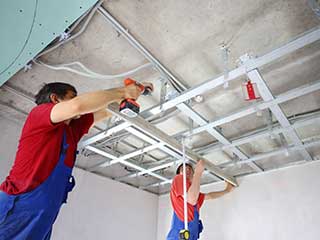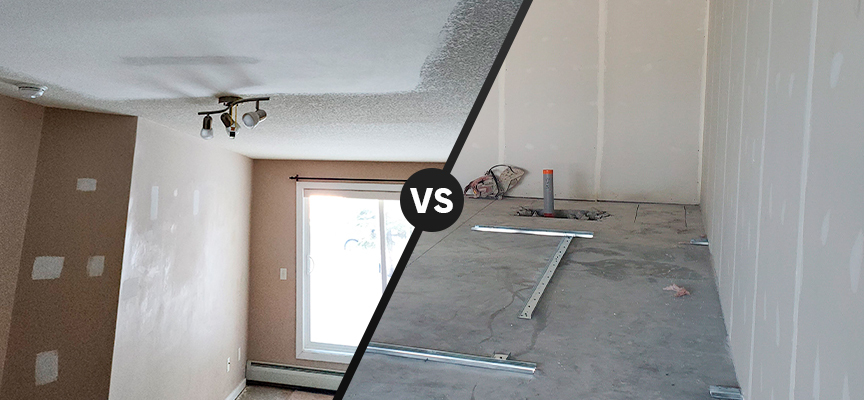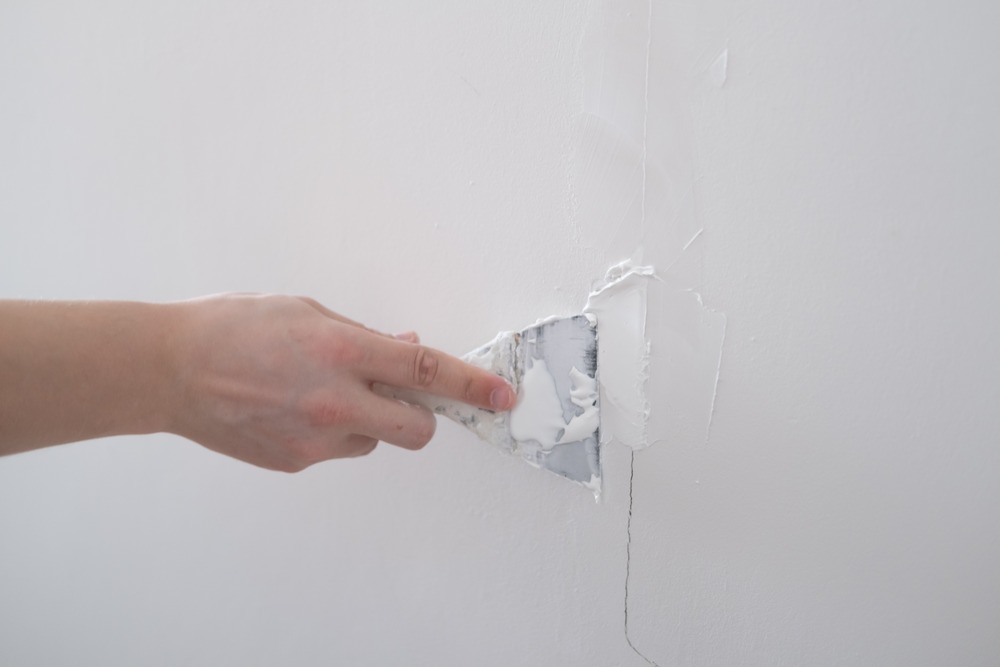Step-by-Step Approaches to Getting Flawless Drywall Repair Service and Installment
Attaining perfect drywall repair work and setup needs an organized strategy. It entails understanding the various sorts of drywall and the devices required for the task. Appropriate area preparation is vital before beginning any job. Interior Painting. Each action, from patching openings to installing new sheets, demands attention to detail. The procedure does not finish with installation; ending up methods are essential for a refined appearance. The following actions will assure a seamless outcome, yet what exactly do they require?
Understanding Drywall Kind and Tools Needed

The installment tools are equally important. An utility knife is vital for cutting drywall sheets, while a drywall saw can help in making specific cuts for outlets or fixtures. T-squares guarantee accurate dimensions, and drywall screws or nails protect the panels to wall studs. Furthermore, a drywall lift can facilitate the installment of huge sheets, decreasing physical strain. Experience with these tools and types appreciably adds to the efficiency and top quality of drywall tasks.
Preparing the Location for Fixing or Installment
Preparing the area for drywall fixing or setup is vital to ensure a effective and smooth procedure. The surrounding area ought to be cleared of furniture and other barriers to provide enough functioning space. This not just guarantees security yet additionally avoids damage to valuables. Next off, it is important to cover the floor with decline cloths to catch any type of debris or dust created throughout the job.
Furthermore, the walls must be checked for any type of loose paint or wallpaper that might hinder attachment. Getting rid of these components produces a tidy surface for the brand-new drywall. Prior to start, it is advisable to transform off power to electric outlets or components in the area. Making certain appropriate lights in the workspace will better enhance exposure and emphasis during the repair work or setup process. drywall contractor. By thoroughly preparing the area, one lays the groundwork for a successful drywall task
Step-by-Step Refine for Patching Holes

Covering holes in drywall calls for a systematic method to ensure a seamless repair. The initial step includes examining the size of the opening. For small openings, a patching substance may suffice, while larger holes necessitate a spot. Next off, the broken area needs to be cleansed and prepared by removing any loosened particles.
For little holes, using spackling substance with a putty knife is advised, smoothing it over the hole and feathering the edges. When dry, fining sand the location assures a smooth surface. For bigger holes, a drywall spot ought to be cut to dimension, placed over the opening, and protected with screws. After mounting the spot, the same spackling procedure is repeated, adhered to by fining sand.
The patched area must be topped and painted to match the bordering wall surface. This precise process ensures a professional appearance and prolongs the lifespan of the repair work.
Mounting New Drywall Sheets: A Comprehensive Guide
Installing brand-new drywall sheets needs careful preparation and implementation to assure a visually enticing and sturdy coating. First, the area needs to be determined properly to identify the variety of sheets required. It is essential to pick the best density, normally 1/2-inch for interior walls and 5/8-inch for ceilings or fire-rated applications.
Next, the studs or framework need to be examined for any abnormalities, ensuring they are straightened and correctly spaced. When positioning the drywall sheets, they need to be placed flat to reduce seams and enhance structural stability. A drywall lift can be valuable for above installments.
Fastening the sheets with drywall screws at ideal intervals ensures a safe and secure setup. It is very important to countersink the link screws somewhat below the surface area to get ready for the completing process. Complying with have a peek here these guidelines will bring about a strong foundation, ready for the next actions in drywall ending up.
Completing Touches: Insulation, Mudding, and Fining Sand Techniques
As soon as the drywall sheets are securely attached, the focus changes to the finishing touches that will certainly supply a refined appearance. This procedure starts with taping, making use of either paper or fiberglass mesh tape to cover the joints in between sheets. The tape guarantees a smooth change, decreasing the threat of fracturing. Complying with taping, mudding is important; a joint substance is used over the tape to load voids and develop a seamless surface. Commonly, multiple layers are essential, every one feathered out better than the before lessen presence.
After enough drying out time, sanding is the final action in accomplishing a flawless surface. A fine-grit sandpaper is made use of to smooth the dried out substance, ensuring there are no blemishes or bumps. Interest to detail during this stage is substantial, as it greatly impacts the total appearance of the wall. The end result should be an even, professional-looking surface area ready for priming and paint.
Regularly Asked Concerns
Exactly how Do I Select the Right Drywall Density for My Project?
To select the right drywall density, think about the job's function, location, and structural demands. Standard densities consist of 1/2-inch for basic use and 5/8-inch for fire-rated applications, guaranteeing sturdiness and conformity with building codes.

Can I Install Drywall Over Existing Drywall?
Yes, mounting drywall over existing drywall is feasible. It is crucial to ensure the underlying surface is safe and free from damage. Proper fastening and consideration of density are important for an effective setup.
What Are the most effective Practices for Drywall Disposal?
The ideal methods for drywall disposal consist of reusing when feasible, utilizing regional waste administration services, and adhering to standards for unsafe products if relevant. drywall contractor. Effectively classifying and sealing waste warranties conformity and safety and security throughout disposal
How much time Should I Wait for Mud to Dry Prior To Fining sand?
Typically, one should wait 24 hr for drywall mud to completely dry before fining sand. Drying time can differ based on humidity and temperature level, so examining for a firm texture is advisable prior to continuing.
Are There Eco-Friendly Drywall Options Available?
Yes, green drywall alternatives are readily available. These choices usually make use of recycled materials, low-VOC adhesives, and sustainable manufacturing look at here techniques, decreasing ecological effect while giving reliable insulation and sturdiness for various building and remodelling tasks.
An utility blade is vital for cutting drywall sheets, while a drywall saw can help in making specific cuts for fixtures or electrical outlets. Preparing the location for drywall repair work or setup is crucial to assure a efficient and smooth procedure. Patching holes in drywall requires a methodical approach to assure a smooth repair. Mounting new drywall sheets needs cautious preparation and implementation to assure a sturdy and visually attractive finish. Yes, setting up drywall over existing drywall is possible.